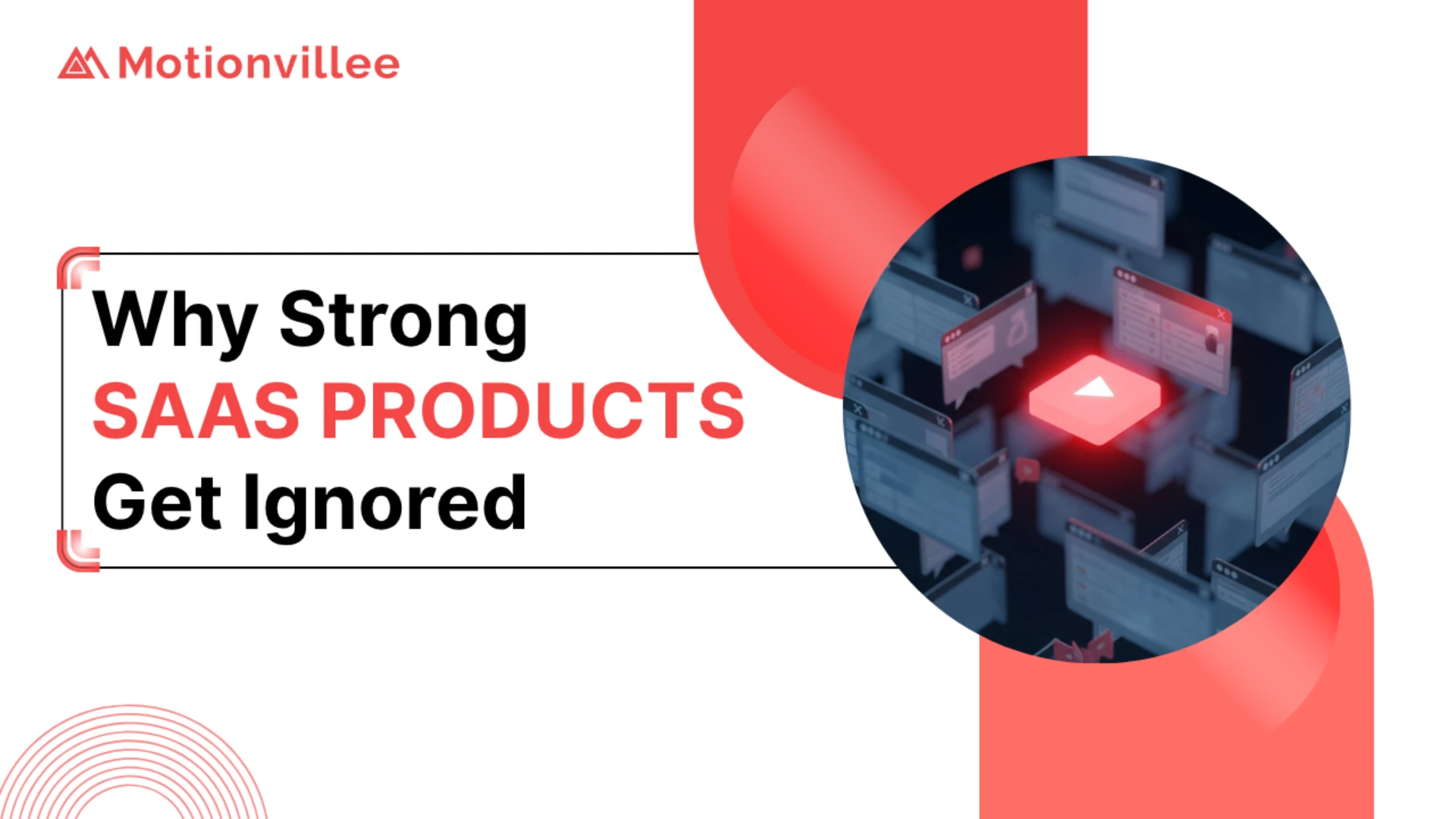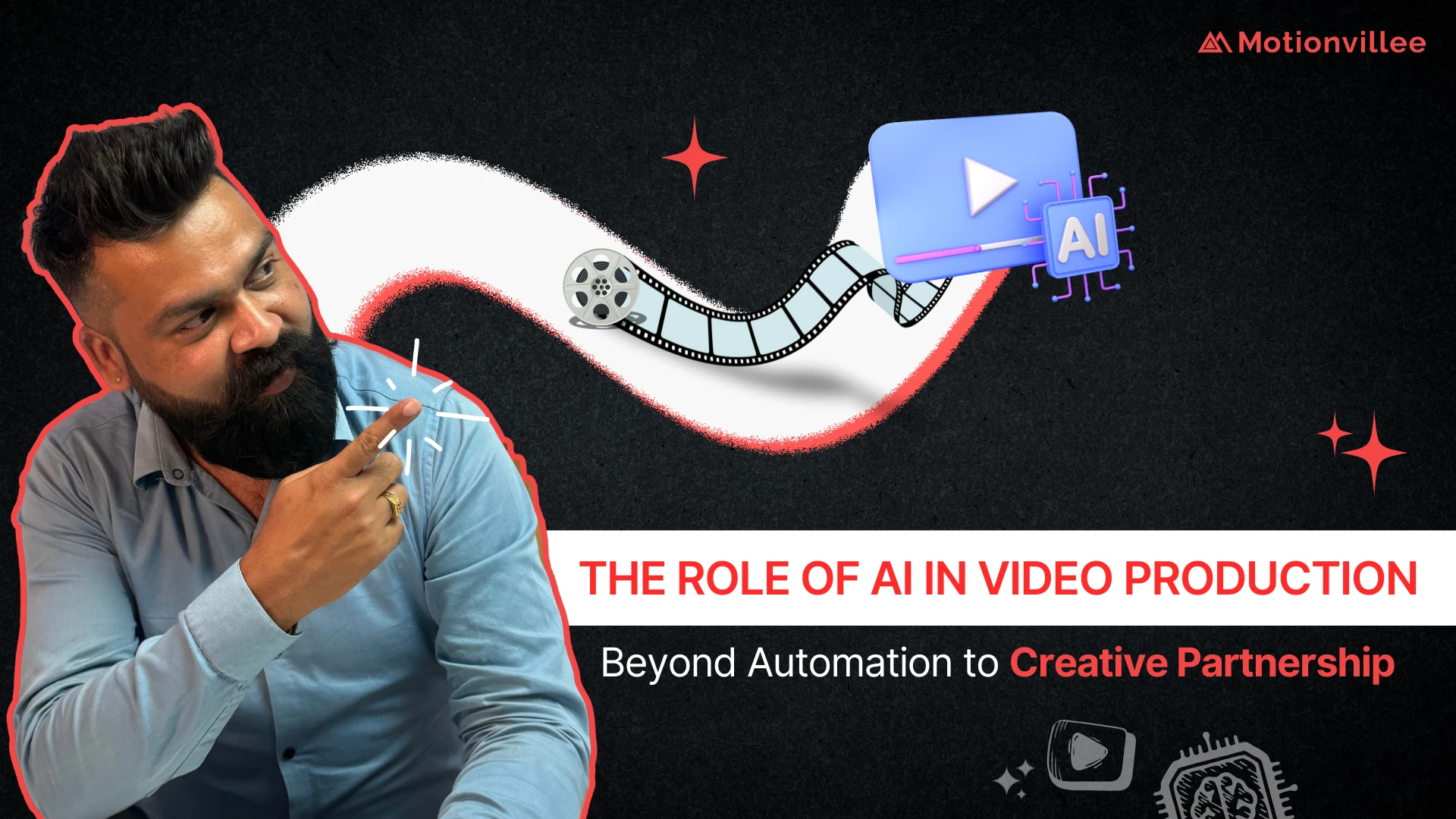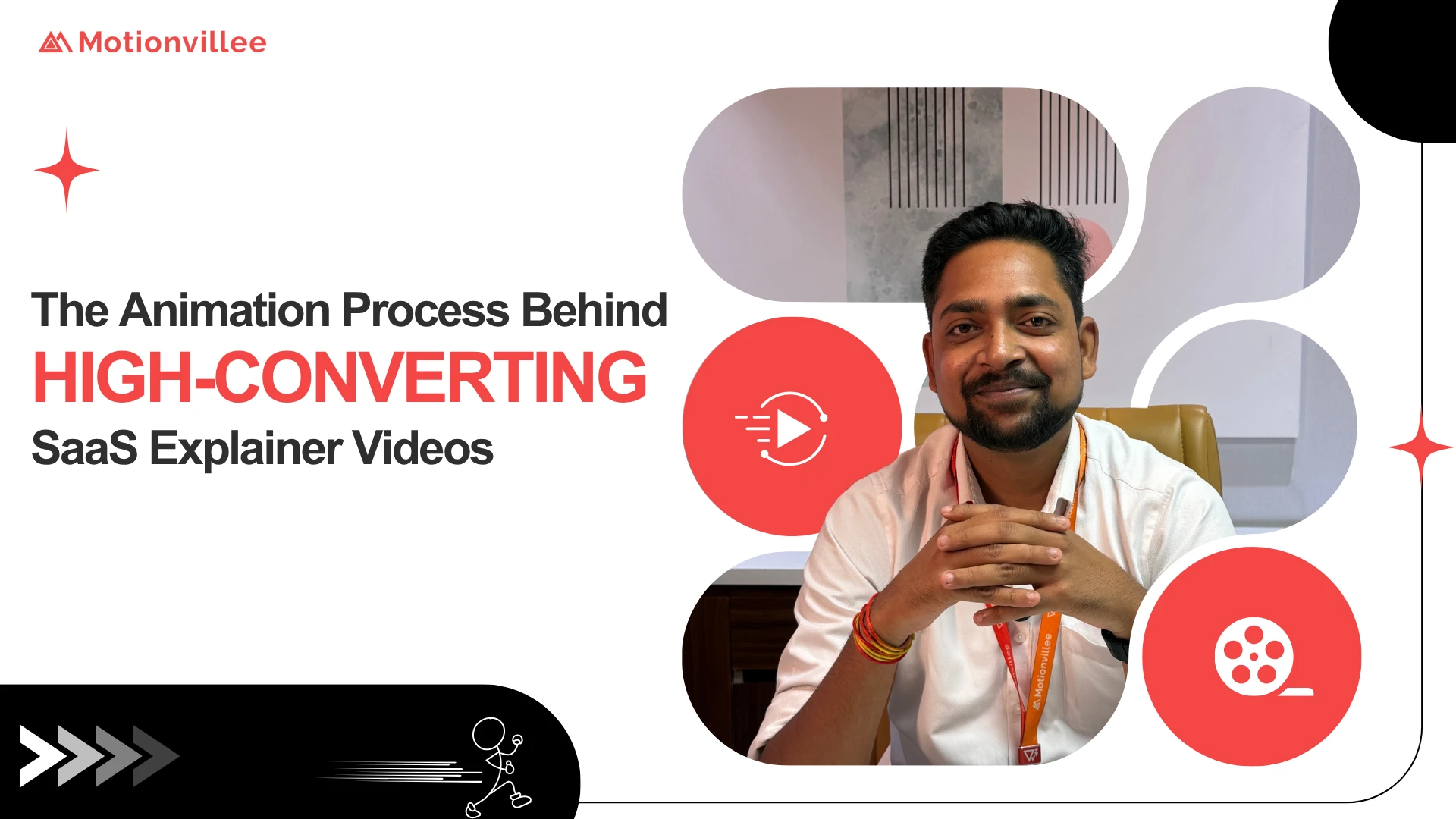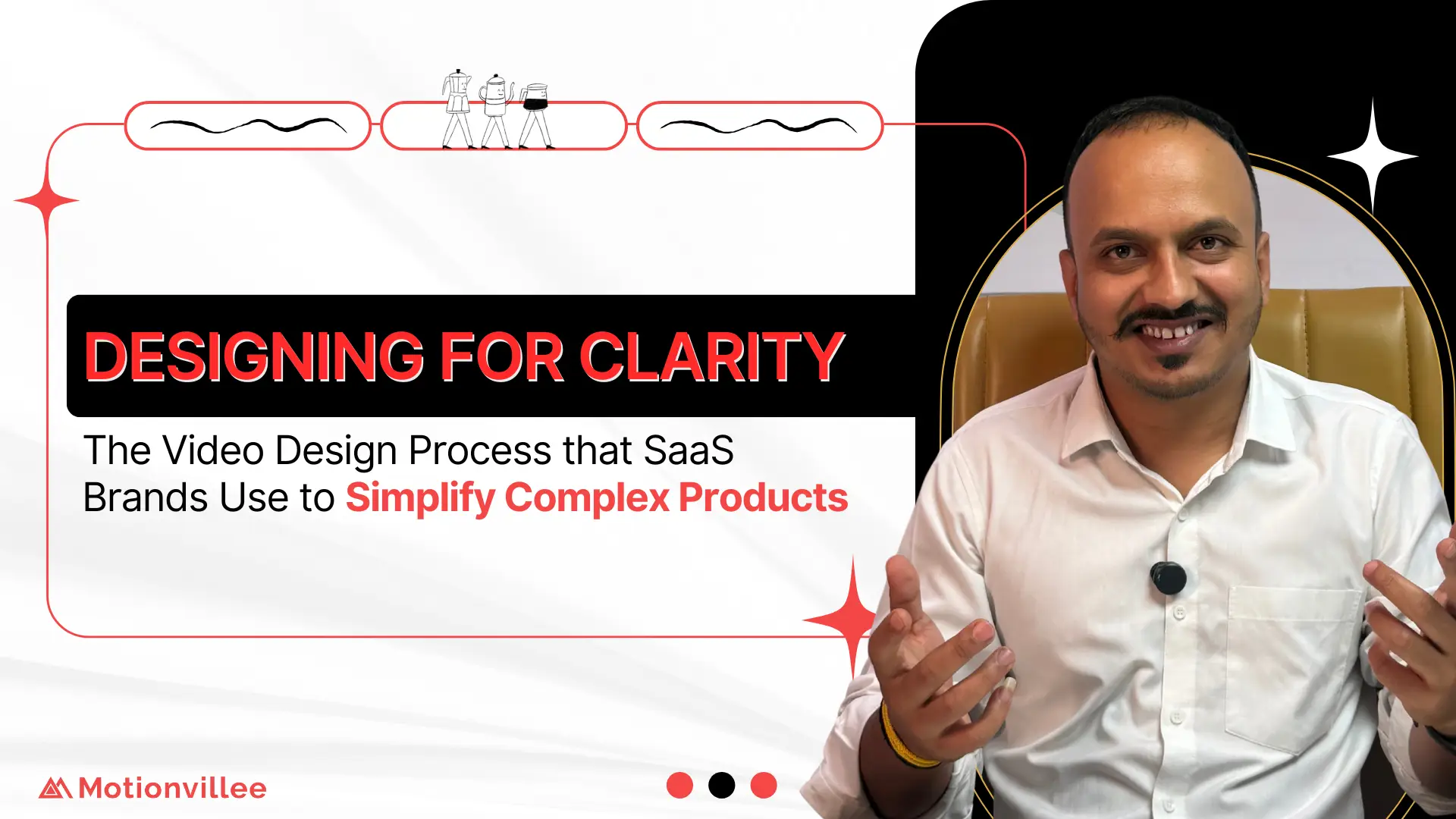Your Product Isn’t the Problem. Your Message Is.
You’ve built exceptional software. The architecture is solid, the features are powerful, and your early customers love it. Yet prospects ignore you, demos don’t convert, and competitors with inferior products keep winning deals.
The problem isn’t your SaaS product. It’s SaaS product clarity. Decision makers encounter hundreds of solutions in your category, and they choose the ones they understand fastest, not necessarily the ones that work best. When prospects can’t quickly grasp what you do, who it’s for, and why it matters, they move on to competitors who communicate more clearly.
This isn’t a marketing problem you fix with better copywriting or more ads. It’s a fundamental communication gap between how you understand your product and how prospects experience it. The good news? Clarity is entirely within your control, and it’s often the highest leverage improvement you can make.
Here’s why strong products get ignored and how to make your SaaS product easy to understand before your next prospect clicks away.
Why Do Strong SaaS Products Get Ignored?
Strong SaaS products fail to gain attention because decision makers can’t quickly grasp what they do, who they’re for, or why they matter.
There’s a paradox in SaaS marketing. Companies with the most sophisticated products often have the worst messaging. They know their technology deeply, so they lead with technical capabilities instead of business outcomes. This creates a SaaS communication problem where feature lists replace clear value propositions.
Why feature focus backfires:
When you list 47 features on your homepage, prospects don’t think “wow, comprehensive.” They think “complicated” and “overwhelming.” Each additional feature adds cognitive load without adding clarity. Your technical excellence becomes noise instead of signal.
The 10 second rule governs buying decisions. Prospects decide whether to engage or leave within 10 seconds of landing on your site. They’re not reading carefully. They’re scanning for immediate understanding. If your message requires careful study to decode, you’ve already lost.
The clarity versus capability trap:
Markets consistently choose clear communication over superior capability. A mediocre product explained clearly will outperform an excellent product explained poorly. This feels unfair to technical founders who’ve invested years building something genuinely better, but buyer psychology doesn’t care about what you deserve.
Technical excellence doesn’t automatically translate to market success. You can have the best architecture, the most innovative algorithms, and the strongest security. But if prospects encounter your brand and think “I don’t understand what this does,” none of that technical superiority matters.
SaaS product message clarity determines whether prospects give you a chance to demonstrate your capabilities. Without that initial clarity, your features never get evaluated because prospects never engage deeply enough to discover them.
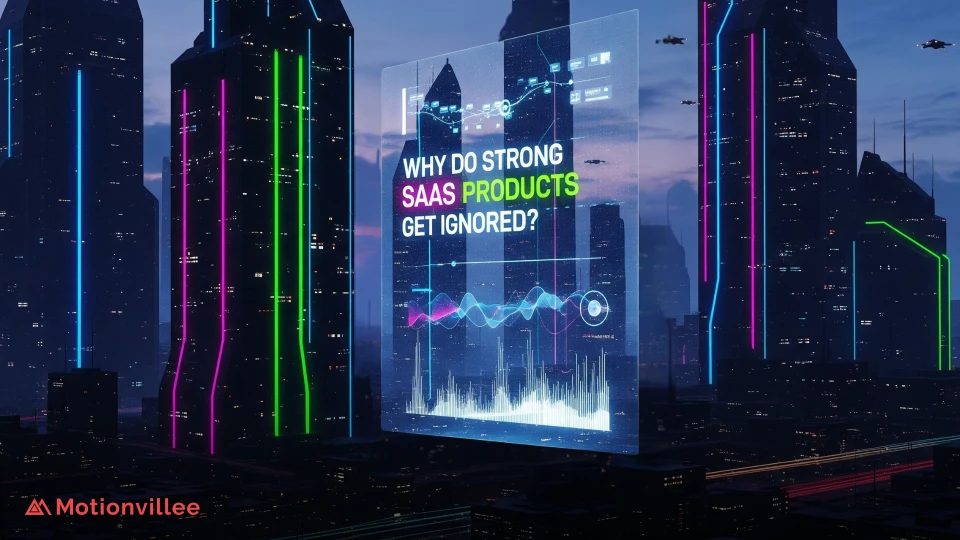
What Is the Clarity Gap in SaaS Marketing?
The clarity gap is the distance between what your SaaS product does and what prospects understand within seconds of encountering your brand.
This gap directly determines engagement. A small clarity gap means prospects quickly grasp your value and move deeper into your funnel. A large clarity gap SaaS companies face means prospects leave confused, never reaching the point where they evaluate your actual capabilities.
Why founders consistently underestimate this problem:
You live inside your product every day. You know exactly what it does, how it works, and why it matters. This insider knowledge creates blind spots. What feels obvious to you is completely opaque to first time visitors. The curse of knowledge makes it nearly impossible to see your product through fresh eyes.
Founders assume prospects will invest time to understand complex value propositions. They won’t. Prospects are evaluating multiple solutions simultaneously, and they allocate attention to the ones that make sense immediately. The SaaS communication problem compounds when you don’t realize how much interpretation your message requires.
The real cost of making prospects work:
Every second of confusion costs you potential customers. When prospects have to decode your messaging, puzzle through your features, or guess who your product is for, you’re creating friction that benefits competitors. The SaaS value proposition that requires effort to extract isn’t a value proposition at all.
The clarity gap expands over time if left unaddressed. As you add features, your messaging becomes more complex. As your product evolves, your positioning grows more muddled. What started as a minor communication issue becomes a major barrier to growth.
Product clarity isn’t just about marketing. It affects sales cycle length, win rates, customer onboarding, and support ticket volume. When prospects don’t understand your product clearly from the start, that confusion persists through every subsequent interaction.
How Does Complexity Kill SaaS Adoption?
Complexity creates cognitive friction that drives prospects to simpler alternatives, even when those alternatives are objectively inferior.
Decision making under uncertainty follows predictable patterns. When faced with a complex choice they don’t fully understand, buyers default to the safer, simpler option. This isn’t rational product evaluation. It’s psychological self protection against making a mistake with something they can’t comprehend.
Why more features backfire in marketing:
You think showcasing extensive functionality demonstrates value. Prospects see extensive functionality and think “this will be hard to implement” or “we’ll never use most of this.” Complex product communication triggers loss aversion. They worry about wasted investment in capabilities they won’t adopt.
The feature arms race in SaaS creates the opposite of its intended effect. Instead of making your product more attractive, additional features make it more intimidating. Prospects wonder if they’re smart enough to use your software or if their team will resist the learning curve.
How jargon creates insurmountable barriers:
Technical language signals expertise to other technical people. To everyone else, it signals exclusion and confusion. When your homepage uses terms like “API first architecture” or “multi tenant infrastructure,” you’re communicating to engineers while alienating the business buyers who control budgets.
SaaS product positioning that relies on industry jargon assumes prospects share your knowledge base. They don’t. Even technical buyers from other domains won’t understand your specific terminology. Every unexplained term adds another layer of cognitive friction.
Real market examples:
Simpler products with inferior capabilities regularly beat complex products in market share. Basecamp dominated project management despite having fewer features than competitors. Slack won team communication despite existing alternatives. Their advantage wasn’t capability. It was clarity about what they did and who they served.
Buyers choose clarity over capability when forced to pick between a product they understand and one they don’t. Your SaaS product loses deals not because it lacks features but because prospects can’t quickly determine if those features solve their problems.
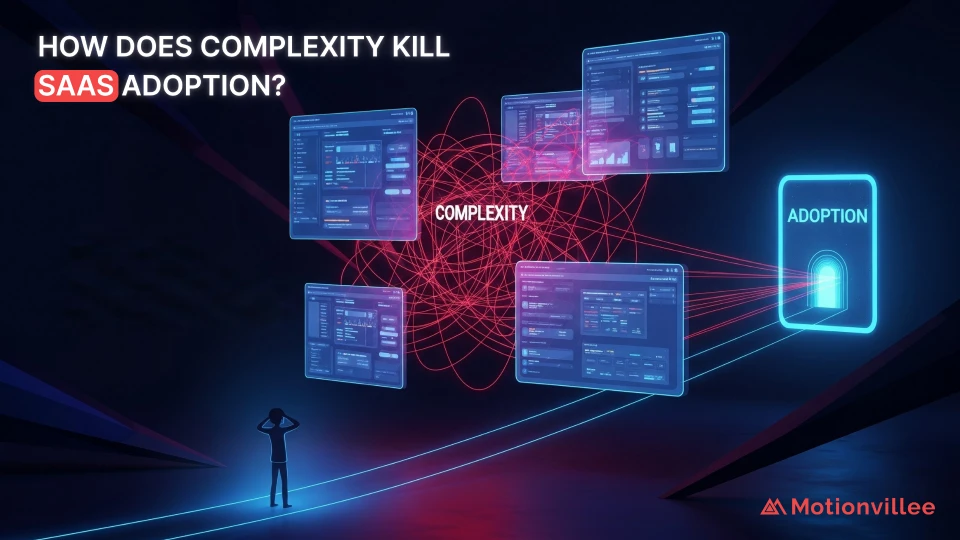
What Are the Warning Signs Your SaaS Lacks Clarity?
If prospects ask basic questions about what you do, if your homepage confuses visitors, or if sales spends too much time explaining fundamentals, you have a clarity problem.
These warning signs are measurable and observable. You don’t need to guess whether you have a clarity issue. Your metrics, customer conversations, and sales process reveal it plainly if you’re paying attention.
Homepage confusion indicators:
- Bounce rates above 60%: Visitors land and immediately leave without exploring further
- Average session duration under 30 seconds: Not enough time to understand your value
- Low scroll depth: Visitors don’t scroll past the homepage hero section
- Exit rates highest on your homepage: Visitors leave from your entry point rather than exploring
Sales process red flags:
- Every discovery call starts with “so what exactly does your product do?”
- Prospects can’t articulate your value prop back to you after demos
- Sales reps create their own simplified explanations because official messaging doesn’t work
- Average time to first demo exceeds industry norms because qualification takes too long
Marketing performance signals:
- Ad click through rates are decent but landing page conversions are terrible
- High cost per demo because most traffic bounces without converting
These product messaging mistakes compound over time. Each confused visitor tells colleagues your product is “complicated.” Each lost deal goes to a competitor with clearer positioning. The SaaS marketing clarity you lack becomes increasingly expensive as word spreads that your product is hard to understand.
Confusing product messaging creates a reputation problem. Eventually, prospects arrive already primed to expect confusion based on what they’ve heard from peers. Fixing this requires more than updating your website. It requires systematic clarity across every touchpoint.
Why Do Technical Founders Struggle With Message Clarity?
Technical founders know their SaaS product too deeply to communicate simply, and their expertise becomes a liability when translating complex functionality into clear value propositions.
The curse of knowledge in product messaging is real and pervasive. Once you deeply understand something, you literally can’t remember what it was like not to understand it. Your brain rewires around that knowledge, making it nearly impossible to communicate at a beginner level.
Why engineers make poor marketers for their own products:
Engineers think in systems, architectures, and technical specifications. They’re trained to be precise and comprehensive. This precision becomes a problem in SaaS messaging when you try to explain every detail instead of highlighting what matters most to buyers.
Technical founders naturally gravitate toward feature lists because features feel concrete and provable. Benefits feel squishy and marketing-y. But prospects don’t buy features. They buy outcomes. The gap between technical product clarity and market positioning creates the founder messaging problems that plague early stage companies.
The thinking gap between you and buyers:
You think about your product in terms of how it works. Buyers think about it in terms of what it does for them. You’re excited about your novel algorithm. They’re worried about whether it solves their problem. This fundamental perspective mismatch means your natural communication style confuses the people you’re trying to reach.
When founders write their own marketing copy, it reads like documentation. Every claim gets caveated. Every benefit gets qualified with technical limitations. This accuracy is admirable but ineffective. Clear messaging requires confident simplification that technical minds resist.
Why external perspective matters:
Someone who doesn’t build your product can often explain it better than you can. They’re not burdened by implementation details. They focus naturally on outcomes because they don’t have deep technical knowledge pulling their attention elsewhere.
This is why SaaS messaging often improves dramatically when marketing professionals who aren’t technical take over positioning. They’re forced to understand the product from a buyer’s perspective because they don’t have the technical background to fall back on.
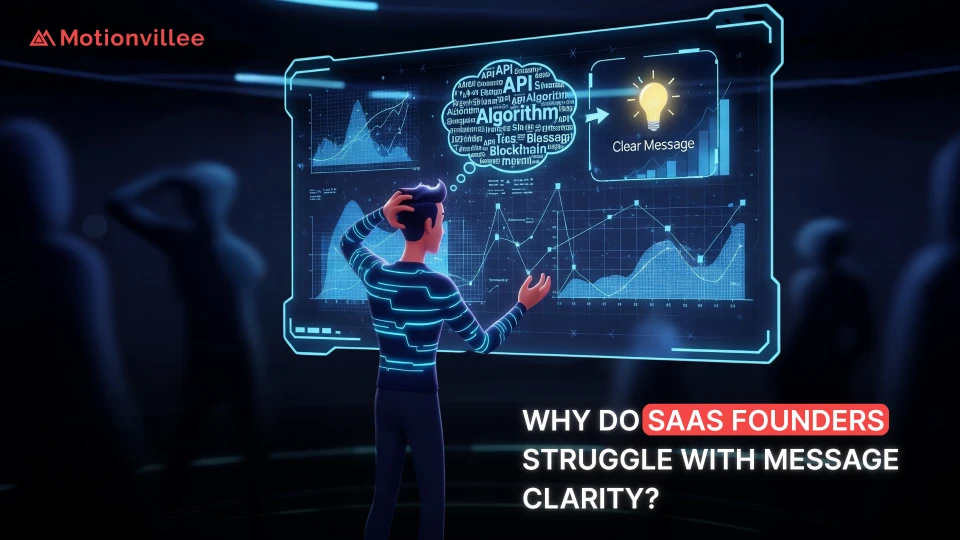
How Does Visual Communication Fix the Clarity Problem?
Visual communication, especially video, cuts through complexity by showing rather than telling, helping prospects understand your product in 90 seconds versus 10 minutes of reading.
The brain processes visual information 60,000 times faster than text. This isn’t a marginal advantage. It’s a fundamental difference in how humans absorb and retain information. When you rely entirely on written explanations for complex product communication, you’re fighting biology.
Why demonstration beats explanation:
Reading about what your SaaS product does requires imagination. Prospects have to mentally construct a picture from your words. Watching it demonstrated removes that cognitive load entirely. They see exactly what you mean without translation effort.
A SaaS explainer video can communicate in 60 seconds what would take 2,000 words to explain in text. More importantly, prospects will actually watch the 60 second video. They won’t read the 2,000 words. Attention is the scarce resource, and visual product communication captures it more effectively.
The efficiency of showing workflows:
Try describing how to use your interface in writing. Now imagine showing someone using it. The difference is dramatic. Workflows that require paragraphs of explanation become instantly clear when demonstrated visually. Product clarity improves immediately when you stop describing and start showing.
Clear messaging through video isn’t just about speed. It’s about comprehension. Prospects retain information better when they see and hear simultaneously. The dual coding effect means they’re forming both visual and verbal memories, making your message stick longer and stronger.
Video as the ultimate clarity medium:
Video combines demonstration, narration, emotion, and pacing in a format prospects prefer. It’s not that written content can’t be clear. It’s that video achieves product clarity faster and with less effort required from your audience.
A well crafted SaaS explainer video answers all three clarity questions (what, who, why) before prospects can get confused. It shows your interface, demonstrates key workflows, and communicates value without requiring prospects to piece together understanding from scattered text blocks.
Product demo clarity improves conversion rates by 20-40% because video removes the interpretation barrier. Prospects no longer wonder “will this work for me?” They see it working and make informed decisions faster.
What Makes a SaaS Message Clear vs. Confusing?
Clear messages answer three questions instantly: what you do, who it’s for, and why it matters, while confusing messages bury these answers under features, jargon, or vague benefits.
The difference between clear and unclear isn’t subjective. It’s measurable by whether prospects can answer those three fundamental questions after encountering your message for 10 seconds.
The three clarity questions every message must answer:
- What do you do? Not features, not technology. The actual outcome you deliver in one simple sentence.
- Who is it for? Specific enough that prospects can immediately tell if it’s relevant to them.
- Why does it matter? The transformation or problem solved, stated in prospect language, not company jargon.
Before and after examples:
- Unclear: “Our AI powered platform leverages machine learning algorithms to optimize cross functional workflows through intelligent automation and predictive analytics.”
- Clear: “We help operations teams cut manual data entry by 80% so they can focus on strategic work instead of repetitive tasks.”
The first example uses jargon, lacks specificity, and doesn’t communicate actual value. The second tells you exactly what happens and who benefits. This is SaaS product message clarity in practice.
Common mistakes in SaaS product positioning:
Confusing product messaging typically fails in predictable ways. It leads with technology instead of outcomes. It targets “everyone” instead of specific buyers. It lists features without connecting them to benefits. It uses industry buzzwords that sound important but mean nothing concrete.
A clear SaaS messaging strategy requires ruthless simplification. Cut every word that doesn’t directly contribute to answering what, who, or why. Remove jargon unless your audience uses those exact terms. Replace feature lists with outcome statements.
How to test if your message is clear:
Show your homepage to someone outside your industry for five seconds. Then ask them to explain what your company does. If they can’t articulate it accurately, your message isn’t clear. This five second test reveals clarity problems that internal teams miss because they already know the answer.
The SaaS value proposition you think you’re communicating often isn’t what prospects actually hear. Testing with fresh eyes exposes the gap between intention and reception. Record these sessions. The confusion points people hit reveal exactly where to simplify SaaS product messaging.
A clear SaaS messaging strategy feels almost too simple to the people who created it. If your team thinks “this doesn’t explain everything our product does,” you’re probably getting close to actual clarity.
How Do You Simplify Complex SaaS Products Without oversimplifying?
Simplification isn’t oversimplifying; it’s removing unnecessary cognitive load so prospects can focus on what matters most, which is whether your product solves their problem.
The fear of oversimplification stops many technical teams from achieving clarity. They worry that making their message simpler means making it less accurate or less impressive. This fear is misplaced. Simplification and oversimplifying are completely different approaches.
Simplification versus oversimplification:
Simplification removes complexity that doesn’t serve the decision. Oversimplification removes important information that prospects need. Good simplification helps someone understand quickly whether your product is relevant. Oversimplification hides information they need to make an informed choice.
The goal isn’t to make your SaaS product easy to understand by hiding its capabilities. It’s to make the entry point clear while keeping depth available for those who want it. Think of it as an information architecture problem, not a marketing problem.
Layering information effectively:
Start with the simplest possible explanation of what you do. Put this on your homepage in the hero section. Then layer additional detail progressively as prospects move deeper. Features page, documentation, demos, and sales calls provide increasing depth for increasingly engaged prospects.
This approach respects both the casual browser who needs quick clarity and the serious evaluator who needs comprehensive information. You’re not hiding complexity. You’re sequencing it appropriately so initial confusion doesn’t prevent deeper engagement.
Using analogies and comparisons:
Technical product clarity improves when you anchor new concepts to familiar ones. “It’s like Dropbox for data pipelines” instantly communicates more than three paragraphs of technical explanation. Analogies work because they leverage existing mental models.
The key is choosing analogies your target audience already understands. Comparing your product to another obscure tool doesn’t help. Comparing it to something widely used in your market creates instant context.
When to lead with outcomes versus features:
Always lead with outcomes for first contact. Your homepage, ads, and initial sales conversations should focus exclusively on what changes for the buyer. Features become relevant only after someone understands the outcome and wants to know how you deliver it.
To simplify complex products, translate every feature into a specific outcome. “Multi tenant architecture” becomes “your data stays completely separate from other customers.” “API first design” becomes “connects to the tools you already use.” This translation makes SaaS product messaging accessible without technical sacrifice.
The litmus test for good simplification: does it help qualified prospects self identify faster? If yes, you’ve simplified well. If prospects who would benefit don’t recognize themselves in your message, you’ve oversimplified or misdirected.
What Role Does Video Play in SaaS Product Clarity?
Video is the fastest path to clarity for complex SaaS products because it combines visual demonstration, narration, and emotional context in a format prospects prefer over reading.
A SaaS explainer video solves the clarity problem faster than any other medium. It shows your interface, demonstrates workflows, and communicates value in the time it takes someone to read two paragraphs. More importantly, prospects will actually watch the video. They won’t read long explanations.
Why video is uniquely suited to complex products:
Visual product communication removes ambiguity. Instead of asking prospects to imagine what you mean, you show them exactly what you mean. There’s no interpretation required. They see your actual interface, actual workflows, and actual outcomes in action.
Product communication through video also controls pacing. You can slow down on complex points and speed through simple ones. You can emphasize what matters and de emphasize what doesn’t. Written content gives all information equal weight. Video creates hierarchy through timing and emphasis.
Types of videos that improve SaaS product clarity:
- Explainer videos (60-90 seconds) answer the three core questions: what, who, and why. These belong on your homepage and provide the fastest clarity entry point for cold traffic.
- Product demo videos (2-5 minutes) show key workflows in action. These work for mid funnel prospects who understand your value proposition and want to see implementation details. Product demo clarity here determines whether interested prospects convert to demos or trials.
- Use case videos show specific scenarios where your product solves real problems. These help prospects see themselves in the story, making abstract benefits concrete and relatable.
Professional explainer video production ensures these assets communicate clearly rather than adding confusion. Poor quality video damages credibility. High quality video builds trust while delivering clarity.
How video reduces sales burden:
When prospects watch a SaaS explainer video before talking to sales, they arrive at conversations already educated. Your team spends less time on basic explanations and more time on strategic fit. This efficiency compounds across hundreds of sales conversations.
Video also scales your best explanation infinitely. Your top performing rep’s demo can be watched by thousands of prospects simultaneously. This consistency ensures every prospect gets your best pitch regardless of which human they encounter first.
Clarity metrics that improve with video:
Companies adding video to key pages typically see 25-40% increases in conversion rates, 30-50% reductions in bounce rates, and significantly shorter sales cycles. These aren’t vanity metrics. They’re direct measurements of improved SaaS product clarity.
Time to demo request often drops by 40-60% because video handles the education that previously required multiple sales touches. Prospects self qualify faster when they can see your product in action before committing to conversations.
How Do You Measure If Your Message Is Clear Enough?
Message clarity is measurable through bounce rates, time to demo request, sales cycle length, and the questions prospects ask; if these metrics are poor, your message isn’t clear.
You don’t need to guess whether you have product clarity. Your data tells you explicitly through both quantitative metrics and qualitative signals.
Quantitative message clarity metrics:
- Bounce rate: Clear homepages have bounce rates below 50%. Above 60% signals clarity problems. Prospects arrive, don’t quickly understand your value, and leave.
- Time to conversion: How long from first visit to demo request? Clear messaging shortens this timeline because prospects understand fit faster. Extended evaluation periods often indicate confusion rather than careful consideration.
- Demo to close rate: If prospects reach demos but don’t convert, they’re arriving without clear understanding. Your early messaging set wrong expectations or attracted poor fits.
- Support ticket volume: High ticket counts on basic questions indicate your onboarding and product documentation lack clarity. Customers who don’t understand your product require expensive hand holding.
Qualitative clarity signals:
The questions prospects ask reveal clarity gaps immediately. If every discovery call starts with “can you explain what you do,” your website messaging failed. If prospects frequently say “I’m not sure if this is right for us,” your positioning lacks specificity.
Listen to sales call recordings. Track the questions prospects ask repeatedly. These questions show exactly where your message needs clarification. Common questions indicate common confusion points that better messaging should address proactively.
Testing frameworks to measure message clarity:
- The five second test: Show your homepage to someone unfamiliar with your company for five seconds. Ask them to describe what you do. If they can’t, your message lacks clarity.
- The mother test: Can you explain your product to your non technical mother in one sentence? If not, your message is too complex for general market consumption.
- The comparison test: Ask prospects to explain the difference between you and your top competitor. If they can’t articulate it, your differentiation messaging isn’t clear.
Benchmarks for clear enough:
- There’s no perfect clarity score, but patterns emerge. Companies with strong product clarity typically see homepage bounce rates below 45%, demo request conversion rates above 3%, and sales cycles 30-40% shorter than industry averages.
- A clear SaaS messaging strategy shows measurable improvement within weeks. Update your homepage messaging and watch bounce rates. Change your demo flow and track conversion. These message clarity metrics respond quickly to improvements, letting you iterate based on real feedback.
- The ultimate clarity benchmark: can prospects accurately explain your value to colleagues after one exposure to your message? If they can advocate for your product based on clarity alone, you’ve achieved the level of understanding that drives organic growth.
Clarity Is Your Competitive Advantage
Strong SaaS products need clear communication to succeed, and SaaS product clarity is entirely within your control.
The companies winning in your market aren’t necessarily building better products. They’re communicating more clearly. They make it effortless for prospects to understand what they do, who they serve, and why it matters. This clarity compounds into faster growth, shorter sales cycles, and stronger market position.
Product clarity isn’t a creative challenge requiring genius marketing. It’s a solvable problem with measurable solutions. Test your current messaging. Identify confusion points. Simplify systematically. Measure improvements. The process is straightforward even when the execution requires discipline.
Most SaaS companies underinvest in clarity because it feels less tangible than adding features or hiring sales reps. But clarity is often the highest leverage improvement you can make. It multiplies the effectiveness of every other investment by ensuring prospects understand your value before you ask them to evaluate features or talk to sales.
Your product deserves a message that matches its quality. Every day you operate with unclear positioning, you’re losing deals to competitors who simply communicate better. The good news? Fixing this doesn’t require rebuilding your product. It requires committing to clarity as a strategic priority.
Ready to close your clarity gap? Schedule a call with Motionvillee to assess how clearly your current messaging communicates your value. We’ll help you identify confusion points and build a communication strategy that makes your product easy to understand from the first second prospects encounter it.


